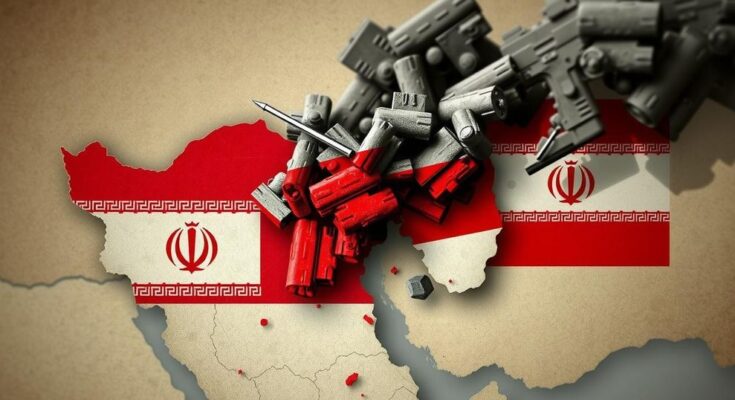The recent collapse of Syrian President Bashar Assad signifies a major setback for Iran’s ‘Axis of Resistance,’ undermining its influence across the Middle East. With Syria lost as a supporter, Iran struggles against increasing military pressure from Israel and complex geopolitical conflicts. The situation threatens Iran’s longstanding strategy while its nuclear ambitions remain an underlying factor in regional dynamics.
The recent fall of Syrian President Bashar Assad marks a significant setback for Iran’s strategy of establishing an “Axis of Resistance” throughout the Middle East. With Assad’s collapse following a swift offensive by rebel forces, Iran finds its influence in the region critically diminished. Previously considered a pivotal partner, Syria enabled Iran to supply Hezbollah in Lebanon, thus posing a direct threat to Israel. The simultaneous conflicts in Gaza and Lebanon have compounded Iran’s difficulties, as its regional deterrence capabilities are now perceived to be in jeopardy. Despite still possessing the potential of its nuclear program, the Iranian theocratic regime faces increasing isolation and economic pressure, while Israel intensifies its military response to eliminate Iranian influence. The long-term implications for Iran’s power remain to be seen, particularly as it navigates a complex landscape fraught with potential instabilities.
Iran’s longstanding objective has been to create a network of allied groups and proxy forces across the Middle East, constituting what has been referred to as the “Axis of Resistance.” This strategy entailed forming alliances with militant organizations such as Hezbollah and providing support to allies such as the Assad regime in Syria. However, the recent events—starting with confrontations in Gaza and escalating conflicts in Lebanon—have placed this strategy in jeopardy. The loss of Assad, a key ally, signals a turning point for Iranian influence in the region and raises questions about Iran’s future capabilities to project power.
The implications of Assad’s downfall extend beyond immediate regional dynamics. They suggest a profound shift in the balance of power, potentially curtailing Iran’s ability to maneuver effectively across the Middle East. Israel’s actions indicate a determined effort to counter Iran’s network of influence, further complicating Iran’s regional aspirations. As Tehran grapples with mounting internal challenges and external pressures, its response will be critical in determining the trajectory of stability in the region.
Original Source: apnews.com




